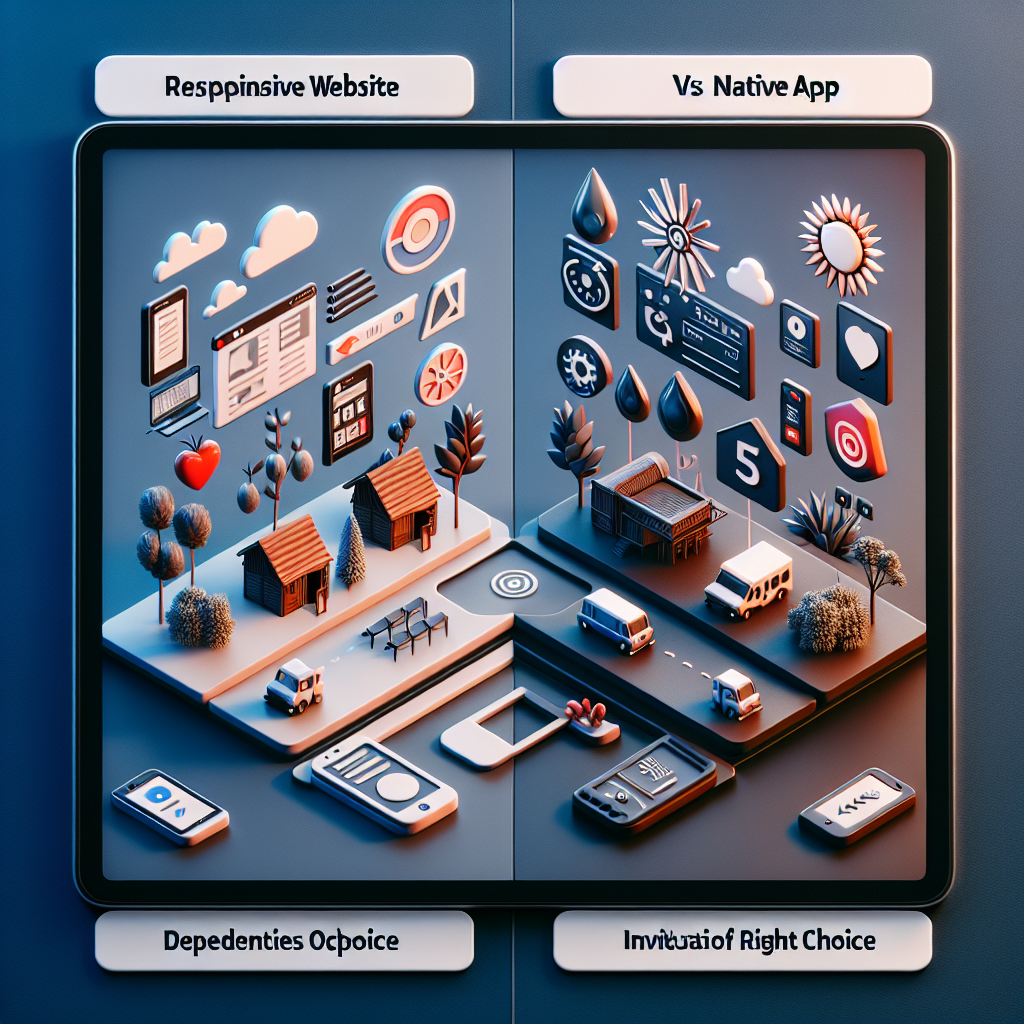In today’s digital landscape, businesses must choose between developing a responsive website or a native mobile app. This decision significantly impacts user experience, accessibility, and overall engagement. In this article, we will explore the benefits and drawbacks of both options, helping you make an informed choice tailored to your business needs.
Understanding Responsive Websites
Responsive websites are designed to provide an optimal viewing experience across a variety of devices, including desktops, tablets, and smartphones. They utilize flexible layouts, images, and CSS media queries to adjust content and functionality based on the screen size. Here are several advantages of opting for a responsive website:
- Cost-Effectiveness: Creating a single responsive website is often more economical than developing separate sites or apps for different platforms.
- Improved SEO: Since responsive websites provide a seamless experience, they are favored by search engines, boosting visibility and rankings.
- Maintenance Efficiency: Updates and changes are easier to implement on a single platform, reducing the long-term costs associated with maintenance.
However, responsive websites may have limitations in harnessing device-specific features. For instance, while they can access camera functions, GPS, and push notifications, the integration is typically less robust than in native apps.
The Case for Native Mobile Apps
Native mobile apps are specifically developed for individual operating systems, such as iOS or Android. They offer unique advantages that appeal to businesses looking to engage users more interactively:
- Performance: Native apps tend to perform better, loading quickly and providing a smoother experience due to their optimized design for specific platforms.
- Enhanced User Experience: Apps can utilize device features like GPS, camera, and offline access, which can enhance user interactions and engagement.
- Loyalty and Retention: Apps are often more easily accessible, leading to increased user loyalty and retention through frequent use and push notifications.
On the downside, developing a native app can be more costly and time-consuming, requiring separate versions for different operating systems. Additionally, users must download and install the app, which can be a barrier to initial engagement.
Making the Right Choice for Your Business
When deciding between a responsive website and a native mobile app, consider your target audience’s needs, your budget, and your long-term goals. If you prioritize broad accessibility and lower costs, a responsive website may be the way to go. Conversely, if your user base demands enhanced functionality and improved performance, investing in a native app could yield greater returns.
Ultimately, the decision will hinge on balancing immediate user needs with future growth objectives, ensuring that whatever path you choose aligns with your business strategy and customer preferences.
In conclusion, both responsive websites and native mobile apps offer unique advantages. By understanding the strengths and weaknesses of each option, you can make a strategic decision that fosters user engagement and supports your business goals.


